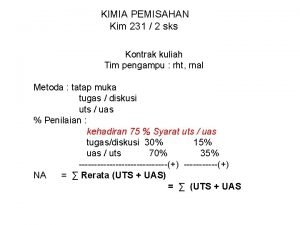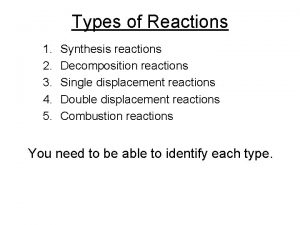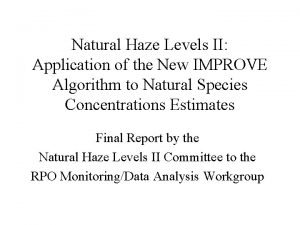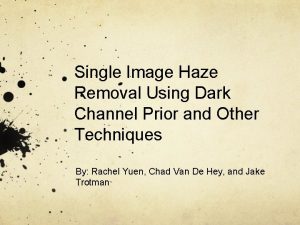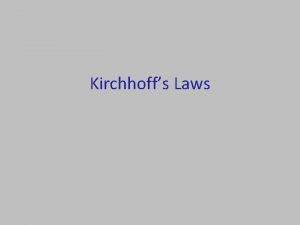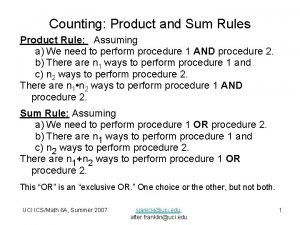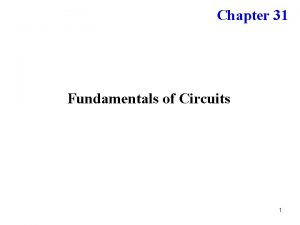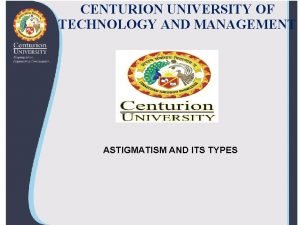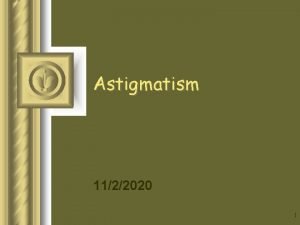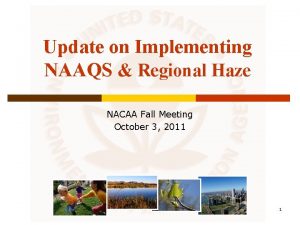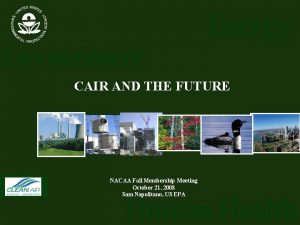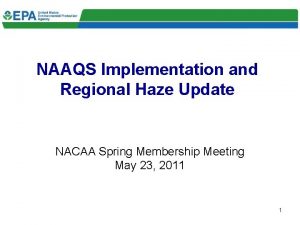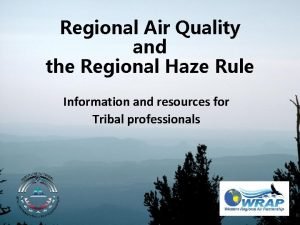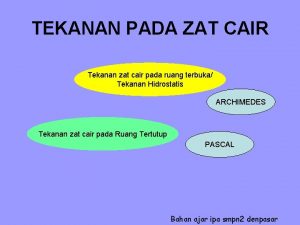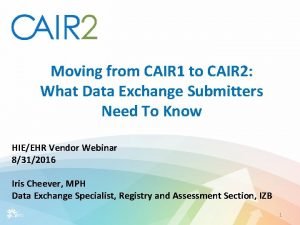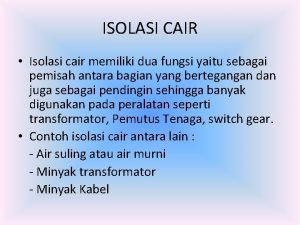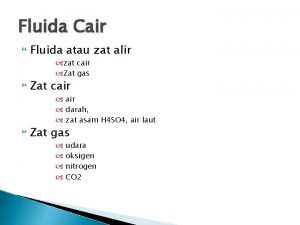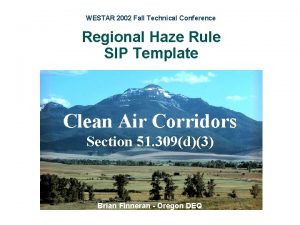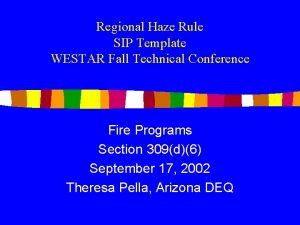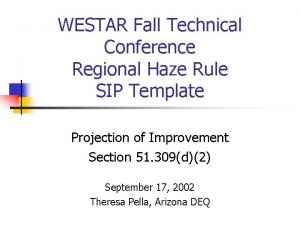CAIR Replacement Rule and Regional Haze NACAA Fall












- Slides: 12

CAIR Replacement Rule and Regional Haze NACAA Fall Meeting September 22, 2009

Background • December 2008 D. C. Circuit Court decision remanded CAIR and FIPs without vacatur – CAIR regional control programs operating – EPA must promulgate replacements • Section 110(a)(2)(D) requires states to prohibit emissions that: – “contribute significantly” to NAAQS nonattainment downwind – “interfere with maintenance” of NAAQS downwind • CAIR was designed to help address 1997 ozone and PM 2. 5 NAAQS

Background (cont) • Court ruled against EPA on issues relating to: – Quantification and elimination of significant contribution – Interference with maintenance – How EPA constructed the regional cap-and-trade programs – State NOX and SO 2 emission budgets • NOX fuel factors – Use of Title IV SO 2 allowances for compliance in the CAIR SO 2 cap-and-trade program – Timing of the second phase – Inclusion of Minnesota for PM 2. 5

Major Issues for Options Recommendation • We will address critical issues including: – Which ozone and PM 2. 5 NAAQS to address beyond 1997 standards • If addressing updated standards, can/should this be done in one, or several rules – Approaches to defining significant contribution and interference with maintenance • Determines which states will be in the program and stringency of rule – Methods for identifying upwind to downwind linkages – Regulatory approaches to “prohibit emissions that significantly contribute” to nonattainment or interfere with maintenance – Which states should be covered – Which source categories to include in the program – What is the right combination of SIPs and FIPs to achieve reductions expeditiously – Several of the issues are interrelated.

Technical, Policy, Legal, and Programmatic Analyses • Analyses include: – Upwind state contributions to downwind areas • New air quality modeling based on emissions projected for 2012 – Costs and other impacts of various regulatory approaches; technical feasibility; distributional effects; potential for non-air quality impacts – Remedy options • Human health and environmental impacts – RIA and other analyses in support of statutes and E. O. s that affect rulemaking – Estimate of administrative burden (ICR) – Analysis of legal risks associated with various technical and policy options • Coordination with other air program activities: – Consideration of utility MACT, revised NAAQS, BART, RACT, Section 126 petitions of NC and DE, interactions with Title IV

Proposed Schedule – Key Dates Sept/Oct 2009 briefings Options recommendation March 2010 Signature on proposal Spring 2011 Signature on final rule

Status of Regional Haze SIPs • 20 (out of 53) final Regional Haze SIPs: – 13 from CAIR States (AL, DE, IA, KY, LA, MS, MO, NC, NJ, SC, TN, WV) – 7 from non-CAIR States (AR, CA, OR, RI, UT, VT; NM COUNTY) • Projected SIP submission dates*: (*Estimates – likely to change) – For remaining 33 States/Territories/County (“States”): • 19 SIPs - by end of 2009 • 11 SIPs + 1 MT FIP - by end of 2010 • 1 SIP (CO) - by July 2011 • 1 HI FIP - sometime after 2009 – Draft/Proposed SIP Status: • 7 Proposed SIPs for public comment submitted – waiting for final SIP • 8 States submitted EPA/FLM Draft SIPs – waiting for Proposed SIP • 37 States received findings of failure to submit Regional Haze SIPs – 6 submitted final SIPs (CA, NJ, OR, RI, TX, VT) – CAA requires EPA to take final action to approve these SIPs and any others submitted after findings by FIP deadline of January 15, 2011.



Reasons Remaining SIPs Not Yet Submitted • CAIR Court Rulings – CAIR States hesitant to finish SIPs without firm direction on what EPA would deem approvable. • Other Priorities (e. g. , PM, Ozone SIPs) – Due to resource constraints, States put health-based standards as higher priority. • State rulemakings for BART and/or Reasonable Progress (RP) Authority – Some states needed to establish authority for requiring BART/RP control & facility submissions. – Rulemakings took longer than expected. • Source Negotiations for BART & RP – Negotiations took longer than expected. – Certain cases very contentious and/or resulted in legal challenges. – Technical issues still unresolved in some states.

Reasons Remaining SIPs Not Yet Submitted (continued) • SIP Development – SIP took longer than expected to develop. • CAIR Eligibility Change – One State (MN) relied on CAIR for EGU BART. – EPA proposing to remove MN from CAIR

Regional Haze SIPs • Key Questions: – How do we get in SIPs from the States in a timely manner to avoid FIPs? – How do we coordinate nationally to ensure consistency in approving/disapproving BART determinations?
 Contoh soal ekstraksi cair-cair
Contoh soal ekstraksi cair-cair Example of combustion reaction
Example of combustion reaction What is the correct equation for cellular respiration?
What is the correct equation for cellular respiration? Natural haze
Natural haze Single image haze removal using dark channel prior
Single image haze removal using dark channel prior Rearrangement of cosine rule
Rearrangement of cosine rule Soh cah toa rules
Soh cah toa rules Junction rule and loop rule
Junction rule and loop rule Sum rule and product rule
Sum rule and product rule Kirchhoff's loop rule example
Kirchhoff's loop rule example With the rule astigmatism
With the rule astigmatism Examples of astigmatism
Examples of astigmatism What is with the rule and against the rule astigmatism
What is with the rule and against the rule astigmatism
